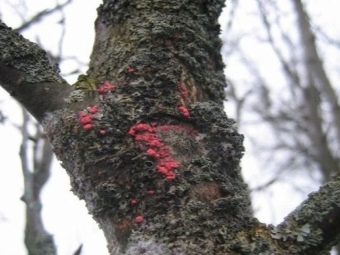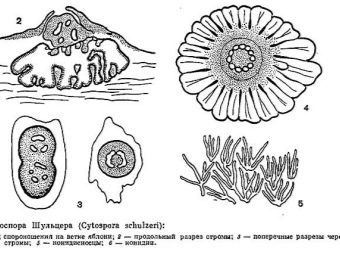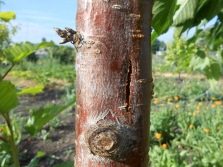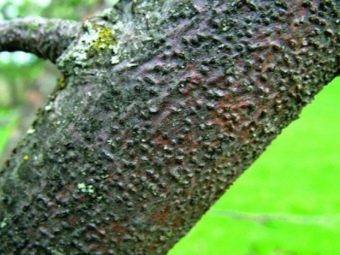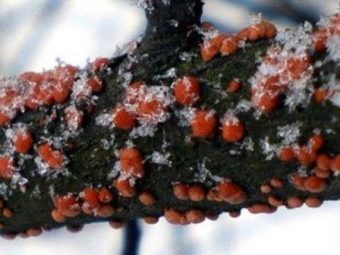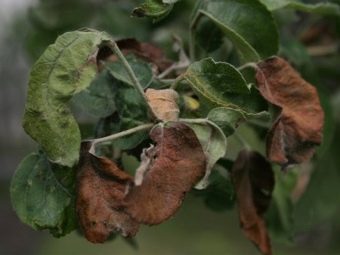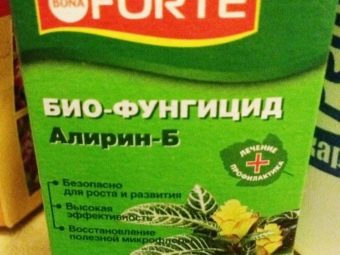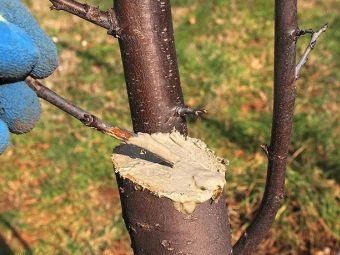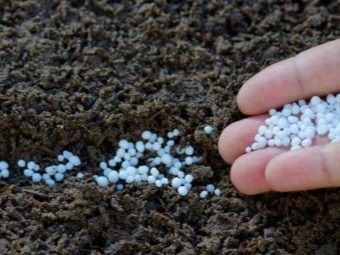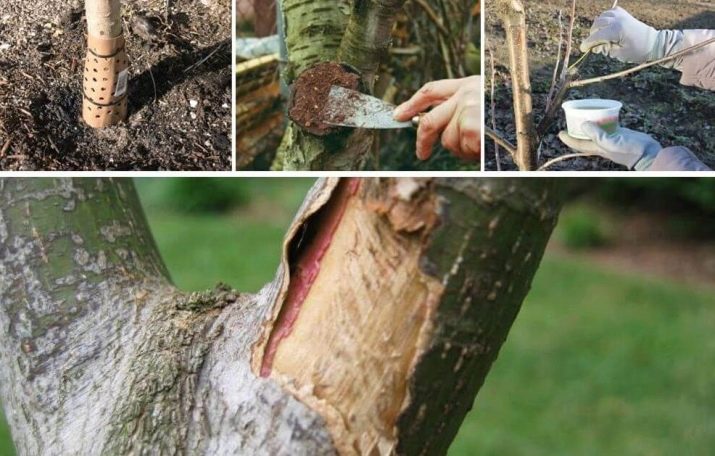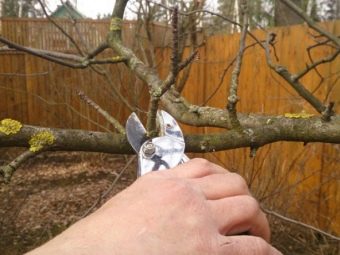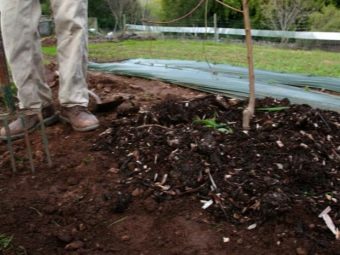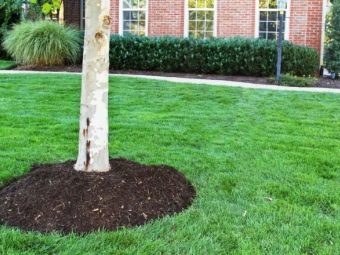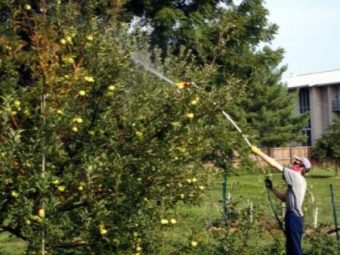Cytosporosis on an apple tree: signs, causes, and methods of treatment
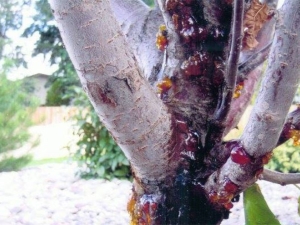
Many gardeners are faced with such an unexpected problem: a healthy and strong fruit tree suddenly begins to dry out right before our eyes. And here it is very important not to lose time, but as soon as possible to determine the cause of the death of the apple tree or other fruit culture. One of the insidious diseases affecting trees in the garden is cytosporosis. The signs of this disease, its causes, as well as methods of treatment of apples infected with cytosporosis will be discussed in the article.
Causes of disease
Fungal microorganism called Cytospora carphosperma Fr. is the causative agent of the same disease of fruit trees. The disease affects many types of garden crops: apples, pears, plum and apricot trees, cherries. In the fall, as well as in the winter and early spring months, weakened fruit trees are very vulnerable to disease and other afflictions. They can be affected by rot, mold and fungal infections like cytosporosis. The fact is that approximately from the end of September, the flow of juice in the fibers of apple trees becomes less intense, the metabolism of tissues almost stops. Any damage to the bark, branch or trunk heals much more slowly. It is this period that is very favorable for colonization of fungal spores in weakened parts of the tree.
Microorganisms can be transported by wind, insects, birds.
On apple trees, the following are favorable sites for the development of pathogens:
- frostbite sites;
- any areas where for some reason the bark is cracked;
- sunburn;
- raw cuts;
- hollow tree trunk;
- areas of bark or branches affected by other diseases or pests.
Infection usually occurs in late fall or early spring, before active sap flow begins. In the cold season, the spores of the fungus are inactive. With the onset of the first heat pathogens begin intensive livelihoods, during which a large number of toxic substances are released. It is they who cause disastrous harm to the tree, poisoning its fabric. The deeper cytosporosis settled in the fibers of the tree, the greater the amount of toxins poisonous for the apple to enter its metabolism.
Signs of
The symptoms of cytosporosis are in many ways similar to the manifestations of black cancer, another insidious disease of fruit crops. And in fact, and in another case, bark cracks on the apple tree, its color changes. The main difference that will definitely not confuse these two diseases is the structure of the surface of the affected areas. With black cancer, the bark darkens and turns black, peeling off in large pieces. With the defeat of cytospores, the bark on the branches and the trunk, on the contrary, becomes loose and urinates. However, it is quite difficult to separate from the affected part of the tree. Symptoms of the disease become most pronounced during flowering or in the first half of summer.
The main signs that an apple tree is infected with cytosporosis are the following changes in the appearance of the fruit tree:
- during the opening of the buds on separate branches, the color dries out, while the dry petals do not fall off for a long time;
- at the initial stage of the disease, the bark is covered with areas with “goose bumps”; multiple dark hillocks form on the trunk or branches of the apple tree;
- further, the areas with damaged bark change color, swellings appear in their place, the affected surface of the apple tree becomes red-brown or brown in color;
- due to malnutrition on the branches, the leaves start to dry; if the trunk is struck, the bark that has changed color also begins to dry;
- trunk surface and thick branches covered with deep cracks that are formed on the border of healthy areas and dying bark; in places where the fabric of the tree is cracked, gum may ooze - this is the substance secreted by cytospores in the process of vital activity;
- thin branches dry up some time after loss of foliage;
- in places where the bark is cracked, the surface of the trunk and branches acquires a spongy, porous structure, but the affected areas are not separated from the tree; they are often quite difficult to remove even mechanically.
Important! If there are multiple cracks on a young apple tree, this means that the disease is already in a rather advanced stage.
There is not much time left to save the tree. Cytosporosis can ruin an apple tree for 2–3 months.
Treatment methods
To achieve a more or less sustainable effect of treatment is possible only in the early stages of the fungal infection. With the penetration of microspores into the tissue of the tree, it is already impossible to restore the affected areas. To save a tree or at least prolong its life in this case can only be done by removing and cutting off all parts infected with cytospores.
- The first thing that a gardener should do when discovering the initial symptoms of the disease is to treat the crown, branch and stem with fungicides. Such drugs are accompanied by instructions describing the rules of application and safety when working with them. It is necessary to familiarize with it in advance and follow all instructions.
- To strengthen the effect of chemicals and to support the protective forces of the apple tree, preparations containing copper will help, since this substance is very effective against fungal microorganisms, as well as against many other diseases and parasites. Concomitant diseases can in parallel with cytospores weaken the tree.
- A 10% solution of ammonium nitrate is introduced into the soil around the apple tree with a damaged trunk. It is advisable to treat the near-stem zone with a weak urea solution (8–10%).
- To effectively treat the initial stages of cytosporosis, it is necessary to resort to extra-root feeding. To do this, fit preparations containing a complex of trace elements. A good firming and nourishing effect is given by spraying the crown with zinc sulfate solution (concentration 0.5%).
- During loosening of the soil in case of fungal diseases, it is useful to add 50 g of zinc and boron powder to the zone of the apple circle.
- At the first signs of the development of a fungal stain, the use of a compound that includes copper sulphate, kerosene and rosin may have a positive effect. The ratio of components - 3: 1: 1. The area with visible manifestations of the disease is lubricated with a solution. At the same time it is necessary to process at least three centimeters of a healthy surface along the edges of the affected spot.
In the more serious stages of the disease, when the bark and twig tissues are thoroughly affected, the use of chemicals and fertilizers is ineffective. They can serve only as an aid, but they will not help get rid of the causative agent. The fungus that settles in the fibers of the tree is almost impervious to fungicidal solutions. Measures to get rid of fungal infection at the stage of damage to the bark and branches include stripping and cutting of the affected areas of the apple tree, which should be done as follows:
- the damaged bark is trimmed, and a margin of 2-3 cm is made around the spot with dead tissue;
- Compulsory treatment of the cleaned area with a solution of copper sulphate in the proportion of 30 g of powder per 1 liter of water;
- the place with the bark removed is covered with a layer of garden pitch, and you can also use a mixture in equal proportions of purified clay and dry mullein; if necessary, the components are diluted with water to the consistency of thick cream;
- the treated area is wrapped with several layers of burlap;
- affected branches should be cut with an indentation of at least 10 cm to a healthy area;
- all removed, cut and sawn-off parts of the tree must be burned, they cannot be stored on the site with other debris, because spores of fungal infections can easily be transferred to fruit crops in the garden.
Relatively recently, another method for dealing with cytosporosis of fruit trees appeared at the disposal of gardeners. It consists in administering medicinal substances directly to the tree sap flow system. Antifungal drugs are thus delivered directly to the pathogen, which settled in the tissues of the apple. For this, a hole is made at the base of the skeletal branches or in the trunk, its depth depends on the age and size of the fruit crop. With the help of a special syringe or a system of thin tubes, the treatment solution is injected into the vessels of the tree. A significant advantage of this innovative method is that it is highly effective in combating the causative agent of cytosporosis even at very advanced stages, but it is extremely difficult to successfully carry out such a procedure yourself without special knowledge and training. To implement this method of treating apples, it is best to hire professionals.
Preventive measures
The wise saying “disease is easier to prevent than to cure,” is undoubtedly also true for fruit trees. If the tree develops under the most favorable conditions, it will be more resistant to damage by diseases and insect pests. Regular and conscientiously carried out preventive measures significantly reduce the percentage of the probability of apple trees being damaged by fungal infections. Each gardener and summer resident should familiarize himself with the rules of agricultural technology of fruit crops. And it is also important to know and apply such affordable methods of preventing diseases of garden plantings as:
- in the period of autumn works on the garden-garden territory, all fallen leaves, fruits, broken branches should be removed from the near-forest zone of apple trees, and the collected plant debris should be burned or taken far beyond the site;
- It is important to follow the schedule of feeding the fruit trees, while it is worth trying to combine fertilization into the soil and spraying the crown with nutrient solutions;
- should be regularly carried out sanitary thinning of the crown, pruning damaged and diseased branches;
- it is necessary to weed weeds in the near-circle wheel, to loosen the soil;
- do not neglect the treatment of wounds and cuts, because this procedure protects the damaged tree tissue from the penetration of pests and microorganisms; it is the weakened unprotected areas of the bark that are the “gateways” for pathogens;
- in the spring, it will be useful to carry out preventive spraying of the crown; Bordeaux liquid is used for this, 4% HOM solution has an excellent anti-fungal effect;
- an important role is played by preparing the apple tree for wintering, the important task is to protect the roots and trunk from freezing; in the autumn, after digging the soil, the stalk zone abundantly mulches, the trunk is wrapped with lapnik or covering material, and after a sufficient amount of snow falls around the apple-tree, a high snowdrift is thrown over;
- with a long drought, the apple tree needs to be organized with sufficient watering; during hot weather, the crown should also be moistened by spraying with water or micronutrient solutions;
- an obstacle to the colonization and reproduction of fungal spores is a high whitewash of the trunk, which takes place in October or November and in the spring, immediately after the snow melts; To enhance the antifungal effect, antimicrobials or fungicides are added to the whitewash solution;
- any damage to an apple tree by pests or diseases weakens the tree; it becomes vulnerable to the spores of the fungus, so it is important to carry out timely treatment of diseases, get rid of harmful insects found on the fruit crop;
- the tools that were used to trim the affected parts of the trees must be disinfected; they can be ignited on fire, or they can be treated with any medical solution for sterilization and disinfection, as well as regular kerosene or industrial alcohol can be used for these purposes.
The main diseases of fruit trees: causes, prevention, treatment in the next video.

